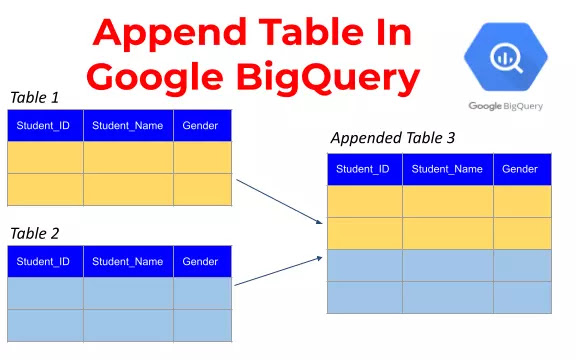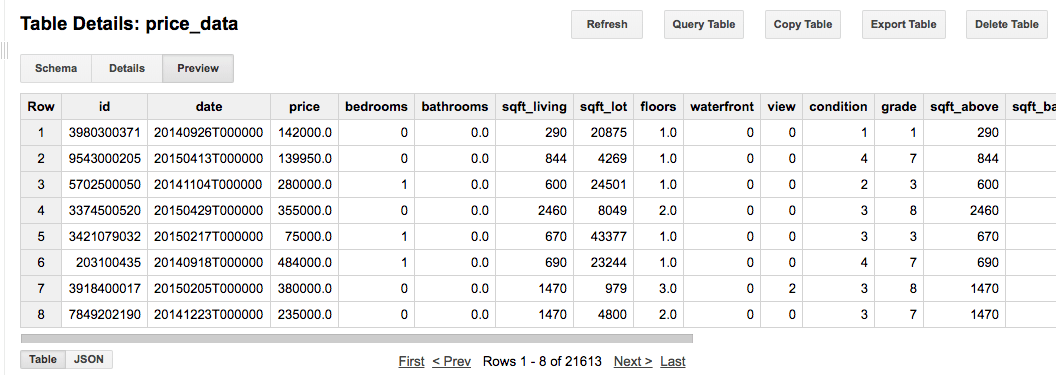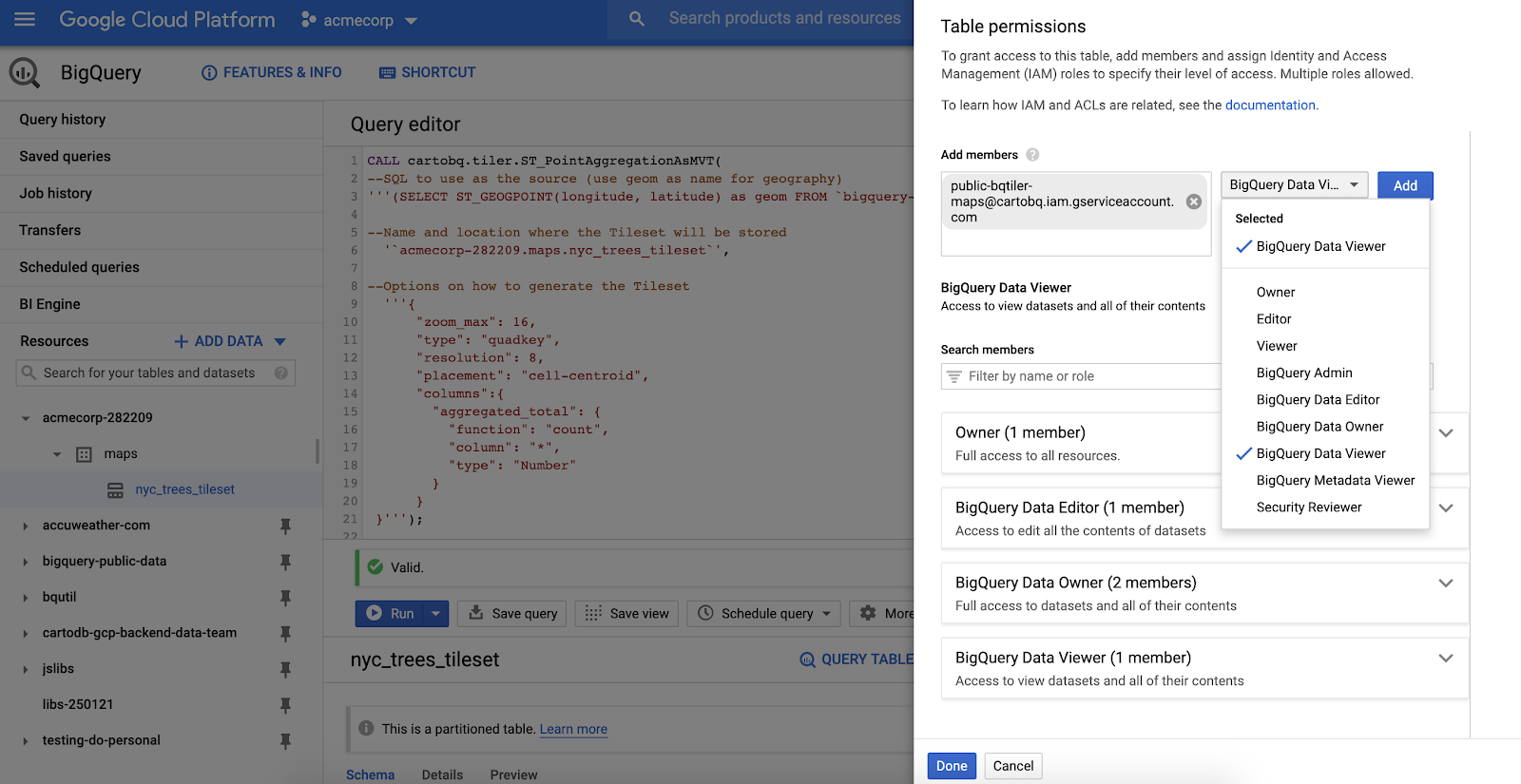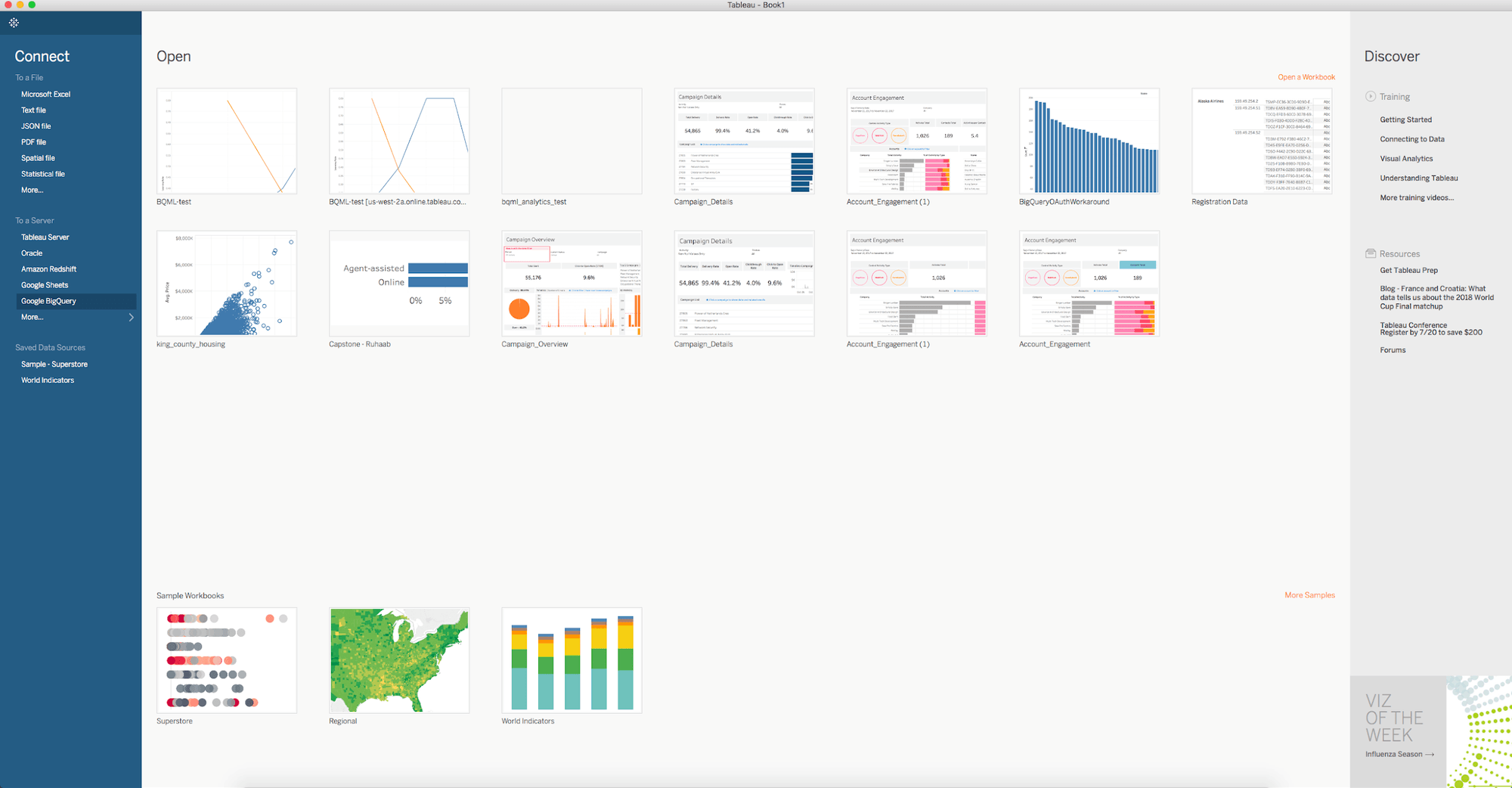Bigquery 2 Decimal Places
BigQuery is a fully managed, serverless data warehouse provided by Google Cloud. It is designed for handling and analyzing large datasets with high performance and scalability. With its distributed architecture and advanced querying capabilities, BigQuery enables users to run complex queries on massive amounts of data in a cost-effective manner.
Understanding Decimal Places in BigQuery
1. Introduction to Decimal Data Type
Decimal data type in BigQuery allows for precise calculations and storage of decimal numbers with a fixed number of decimal places. It is often used in financial calculations and any scenario where accuracy and precision are crucial. Unlike floating-point numbers, decimal data type provides exact representation of decimal numbers.
Using decimal data type offers numerous benefits, including:
– Precision: Decimal data type ensures exact representation of decimal numbers with a fixed number of decimal places, eliminating potential rounding errors associated with floating-point numbers.
– Accuracy: By storing and performing calculations with decimal numbers in their exact form, decimal data type guarantees accurate results.
– Reproducibility: Decimal numbers stored using decimal data type can be reproduced accurately multiple times, ensuring consistent calculations and analysis.
2. Setting Decimal Places in BigQuery
To configure the number of decimal places for a decimal column in BigQuery, you need to specify the precision and scale values when defining the schema for the table. The precision value represents the total number of digits (both before and after the decimal point), while the scale value indicates the number of digits after the decimal point.
For example, if you want to store a decimal number with 8 digits (3 digits before the decimal point and 5 digits after the decimal point), you would define the precision as 8 and the scale as 5.
When choosing the appropriate decimal places for your data, consider factors such as the level of precision required, the size of the numbers, and the impact on storage and query performance. Keep in mind that using a higher precision and scale may increase storage costs and query execution time.
3. Rounding and Truncating Decimal Numbers
In BigQuery, you have various methods for rounding and truncating decimal numbers. The choice of method depends on the specific requirements of your calculations. Here are some commonly used rounding methods:
– ROUND: This function rounds the decimal number to the nearest value, with the option to specify the number of decimal places.
– TRUNC: This function truncates the decimal number towards zero, removing any decimal places beyond the specified precision.
– FLOOR: This function rounds the decimal number down to the nearest whole number or specified precision.
– CEILING: This function rounds the decimal number up to the nearest whole number or specified precision.
By applying these rounding and truncating techniques, you can control the precision of your decimal numbers and ensure they align with your desired level of accuracy.
4. Performing Calculations with Decimal Data
When performing calculations with decimal data in BigQuery, it is important to understand how decimal precision affects the results. Depending on the precision and scale defined for your decimal columns, you may encounter precision errors due to rounding or truncating operations.
To ensure accurate calculations, follow these best practices:
– Avoid cascading rounding errors: If your calculations involve multiple steps, be mindful of rounding errors that can accumulate and affect the final results. It is recommended to perform intermediate calculations with higher precision before rounding to the desired decimal places.
– Use appropriate rounding methods: Choose the appropriate rounding method based on your specific scenario. For example, round-to-even (also known as “banker’s rounding”) can minimize rounding bias by rounding to the nearest even number.
– Perform validation checks: Regularly validate your calculations against known benchmarks or manual calculations to identify any discrepancies that may indicate precision errors.
By implementing these best practices, you can maintain accuracy and integrity in your calculations with decimal data.
5. Formatting Decimal Numbers in Query Results
BigQuery allows you to customize the display format of decimal numbers in query results using formatting functions. The FORMAT function can be used to specify the number of decimal places to show in the output. For example, FORMAT(number, ‘0.00’) would format the decimal number with two decimal places.
In addition to the FORMAT function, BigQuery provides other formatting functions, such as TO_CHAR, TO_DECIMAL, and TO_HEX, which enable you to further refine the display format and convert decimal numbers into different representations.
By leveraging these formatting functions, you can present decimal numbers in a visually appealing format that aligns with your reporting or analysis requirements.
6. Aggregating Decimal Data
BigQuery supports various aggregate functions, such as SUM, AVG, MAX, MIN, etc., for working with decimal data. These functions can be used to calculate aggregate values based on decimal columns in your dataset.
When aggregating decimal data, the precision and scale defined for the decimal columns can impact the results. It is important to consider the following:
– Loss of precision: Aggregations involving decimal numbers with a high precision and scale may result in loss of precision due to rounding or truncating operations performed during the calculation process.
– Handling large decimal numbers: When working with decimal numbers of significant magnitude, consider strategies such as scaling down the numbers before aggregation to avoid potential performance issues.
7. Limitations and Considerations with Decimal Data Type
While decimal data type in BigQuery offers precise calculations and storage for decimal numbers, there are some limitations and considerations to take into account:
– Storage costs: Using decimal data type may increase the storage requirements for your dataset, particularly if you require a high precision and scale. Factor in the potential impact on storage costs when deciding on the appropriate decimal places for your data.
– Query performance: Queries involving decimal data type may experience slightly slower performance compared to those using integer or floating-point data types. This is primarily due to the increased storage requirements and the precision calculations involved.
– Conversion and rounding errors: When importing or exporting decimal data, be cautious of potential conversion errors or issues related to rounding when the decimal places are not handled consistently across systems.
To address potential issues and workarounds related to decimal data type in BigQuery, consider the following steps:
– Validate and monitor results: Regularly validate and compare calculated results against known benchmarks or manual calculations to identify any discrepancies that may indicate precision errors.
– Optimize queries: Take advantage of BigQuery’s query optimization techniques, such as partitioning, clustering, and caching, to improve the performance of queries involving decimal data.
– Data preprocessing: When working with decimal numbers of large magnitude, consider scaling down the numbers before importing into BigQuery to reduce the storage requirements and enhance query performance.
Frequently Asked Questions
1. How can I remove decimal places in SQL BigQuery and keep only two decimal places?
In BigQuery, you can use the ROUND function combined with the FORMAT function to remove decimal places and keep only two decimal places. For example, to remove decimal places from a decimal number stored in a column named “amount” and keep only two decimal places, you can use the following SQL query:
“`
SELECT ROUND(amount, 2) AS formatted_amount
FROM your_table
“`
2. How can I convert a decimal number to an integer in BigQuery?
To convert a decimal number to an integer in BigQuery, you can use the CAST function. For example, to convert a decimal column named “decimal_number” to an integer column, you can use the following SQL query:
“`
SELECT CAST(decimal_number AS INT64) AS integer_number
FROM your_table
“`
3. How can I set the default number of decimal places for a decimal column in BigQuery?
When defining the schema for a table in BigQuery, you can specify the precision and scale values for a decimal column. The precision value represents the total number of digits (both before and after the decimal point), while the scale value indicates the number of digits after the decimal point. By setting the appropriate precision and scale values, you can define the default number of decimal places for a decimal column.
4. Can I change the precision and scale of an existing decimal column in BigQuery?
No, you cannot change the precision and scale of an existing decimal column in BigQuery. If you need to modify the precision and scale, you will need to recreate the table with the desired precision and scale values and then populate it with the data from the original table.
5. How can I handle precision errors when performing calculations with decimal data in BigQuery?
To handle precision errors when performing calculations with decimal data in BigQuery, follow best practices such as avoiding cascading rounding errors, using appropriate rounding methods, and performing validation checks against known benchmarks or manual calculations. These practices can help identify and address precision errors to ensure accurate results.
In conclusion, understanding decimal places in BigQuery is crucial for achieving accurate and precise calculations with decimal data. Configuring the appropriate number of decimal places, properly rounding and truncating decimal numbers, and handling precision errors are essential steps for maintaining accuracy in results. By leveraging the formatting functions and understanding the limitations and considerations associated with decimal data type, users can effectively work with decimal data in BigQuery and employ it for their specific analysis and reporting needs.
Sql : Bigquery Sql: Percent With 2 Decimal Places
How To Set 2 Decimal In Sql?
SQL, or Structured Query Language, is a popular programming language used for managing relational databases. It provides a wide range of data types to store and manipulate different types of information, including numeric data.
The numeric data types in SQL can vary in terms of precision and scale. Precision refers to the total number of digits that can be represented, while scale represents the number of decimal places. By default, many numeric data types in SQL do not have a specified scale. Therefore, if you need to store or display a value with a fixed number of decimal places, you must explicitly set it.
Here are some methods you can use to set two decimal places in SQL:
1. DECIMAL/NUMERIC Data Type: One common approach is to use the DECIMAL or NUMERIC data type. These data types allow you to specify the precision and scale when defining a column. For example, to create a column with two decimal places, you can use the following syntax:
“`
CREATE TABLE my_table (
my_column DECIMAL(9,2)
);
“`
In this example, the DECIMAL data type is used with a precision of 9 and a scale of 2. This means the column can store up to 9 total digits, with 2 decimal places.
2. ROUND() Function: Another method to set two decimal places in SQL is by using the ROUND() function. This function allows you to round numeric values to a specific number of decimal places. For instance, consider the following query:
“`
SELECT ROUND(my_column, 2) FROM my_table;
“`
In this query, the ROUND() function is used to round the values in the `my_column` column to two decimal places. The result will be the original value, rounded to the nearest two decimal places.
3. FORMAT() Function: If you’re working with SQL Server, the FORMAT() function can be used to set two decimal places as well as format the result as a string. This function provides more control over the formatting of numeric values. Here’s an example query:
“`
SELECT FORMAT(my_column, ‘N2’) FROM my_table;
“`
In this query, the FORMAT() function is used to format the `my_column` values as numbers with two decimal places. The result will be a string representation of the number, with the desired formatting.
Now that you have learned different methods for setting two decimal places in SQL, let’s address some frequently asked questions:
Q: Can I modify the scale of an existing column in a table?
A: Yes, you can alter the scale of a column using the ALTER TABLE statement. However, altering the scale may result in data loss or rounding errors, so it is recommended to back up your data before making any changes.
Q: Are there any performance implications of using the ROUND() or FORMAT() functions?
A: Yes, using these functions can impact performance, especially when dealing with large datasets. It involves additional computations, which may slow down the query execution. It is advisable to test the performance impact carefully and consider alternate solutions if necessary.
Q: Can I set the number of decimal places for a specific SELECT statement only?
A: Yes, you can use any of the above methods within a SELECT statement to format the output for that query only. It won’t affect the persistent storage of the column or table structure.
Q: Are there any limitations on precision and scale for DECIMAL/NUMERIC data types?
A: Yes, the limit for both precision and scale depends on the specific database system you are using. Generally, precision can range from 1 to 38, while scale can range from -84 to 127. However, the effective precision and scale may be further constrained depending on other factors, such as storage requirements.
In conclusion, setting two decimal places in SQL can be accomplished using various methods, including using the DECIMAL/NUMERIC data type with specific precision and scale or utilizing functions like ROUND() and FORMAT(). While these methods ensure the desired precision, it is important to consider the potential impact on performance and any limitations set by the database system. With these considerations in mind, you can confidently work with numeric data in SQL while ensuring the necessary decimal places are set.
How To Format 2 Decimal Places In Sql Server?
When dealing with numerical data in SQL Server, it is often necessary to format the output to a specific number of decimal places. This can be particularly important when presenting data to users or performing calculations that require a specific level of precision. In this article, we will explore various methods to format decimal places in SQL Server, specifically focusing on formatting values to 2 decimal places.
Formatting Decimal Places in SQL Server Using the CONVERT Function:
One commonly used method to format decimal places in SQL Server is by using the CONVERT function along with the DECIMAL data type. The CONVERT function allows for the conversion of a value from one data type to another, while also providing options to control the display format.
To format a decimal value to 2 decimal places, we can use the CONVERT function as follows:
SELECT CONVERT(DECIMAL(10, 2), [ColumnName]) AS FormattedValue
FROM [TableName];
In the above query, [ColumnName] refers to the column name containing the decimal value that you wish to format, and [TableName] refers to the table name containing that column. The DECIMAL(10, 2) notation ensures that the conversion results in a decimal with a precision of 10 and a scale of 2, meaning 2 decimal places will be displayed.
Formatting Decimal Places in SQL Server Using the CAST Function:
Similar to the CONVERT function, the CAST function can also be used to format decimal places in SQL Server. The CAST function is used to explicitly convert values from one data type to another, and it can be applied in a similar manner to format decimal places.
The following query demonstrates the usage of the CAST function to format a decimal value to 2 decimal places:
SELECT CAST([ColumnName] AS DECIMAL(10, 2)) AS FormattedValue
FROM [TableName];
In this case, [ColumnName] and [TableName] have the same meanings as in the previous example. The CAST function, when used with the DECIMAL(10, 2) notation, converts the value to a decimal with a precision of 10 and a scale of 2, thereby achieving the desired formatting of 2 decimal places.
Formatting Decimal Places using the FORMAT Function:
SQL Server 2012 introduced the FORMAT function, which offers more flexibility in formatting decimal places and various other data types. It allows for more customized formatting options by utilizing format codes.
To format a decimal value to 2 decimal places using the FORMAT function, the following query demonstrates its usage:
SELECT FORMAT([ColumnName], ‘N2’) AS FormattedValue
FROM [TableName];
In this example, the FORMAT function is applied to [ColumnName], and ‘N2’ is used as the format code. ‘N2’ specifies that the value should be formatted as a number with 2 decimal places. The FORMAT function also supports additional format codes for different formatting options, such as currency or percentages.
Formatting Decimal Places using the ROUND Function:
Another technique to format decimal places in SQL Server is by using the ROUND function in combination with the desired number of decimal places. The ROUND function allows you to specify the number of decimal places to round to, achieving the desired formatting effect.
To format a decimal value to 2 decimal places using the ROUND function, consider the following query:
SELECT ROUND([ColumnName], 2) AS FormattedValue
FROM [TableName];
In this query, the ROUND function is applied to [ColumnName], and 2 is used as the precision argument. This will round the value to 2 decimal places, providing the desired formatting result. However, it is important to remember that the ROUND function will alter the value and potentially introduce rounding errors, so use with caution when high precision is required.
FAQs:
Q: Can I apply these formatting methods to any numerical data type in SQL Server?
A: Yes, these formatting methods can be applied to different numeric data types such as numeric, decimal, float, etc. However, it is important to ensure that the selected data type can accommodate the desired number of decimal places.
Q: Can I combine formatting methods to achieve more complex formatting requirements?
A: Yes, you can combine multiple formatting methods to achieve more complex formatting requirements. For example, you can first round a value using the ROUND function and then apply formatting using the CONVERT, CAST, or FORMAT functions.
Q: Are there any performance implications when using these formatting methods?
A: While the performance impact of using these formatting methods is generally minimal, excessive use or misuse may lead to decreased query performance. It is recommended to test and evaluate performance implications, especially when dealing with large datasets or complex queries.
Q: Can I format decimal places directly in the front-end application instead of SQL Server?
A: Yes, formatting decimal places can also be handled in the front-end application. However, performing formatting in SQL Server can be more efficient, as it reduces the amount of data transferred between the server and application, especially when large datasets are involved.
In conclusion, formatting decimal places in SQL Server is a common requirement when working with numerical data. By utilizing functions like CONVERT, CAST, FORMAT, or ROUND, you can easily format your decimal values to 2 decimal places or any other precision needed. Remember to choose the appropriate method based on your specific needs and consider the potential impact on performance.
Keywords searched by users: bigquery 2 decimal places Remove decimal in SQL
Categories: Top 71 Bigquery 2 Decimal Places
See more here: nhanvietluanvan.com
Remove Decimal In Sql
Structured Query Language, commonly known as SQL, is a programming language designed for managing relational databases. It provides a wide range of functions and operators to manipulate and handle data effectively. One common task that often arises when working with numerical data in SQL is the need to remove decimals from a number or a column. Removing decimals can be useful in various scenarios such as financial calculations, data analysis, and formatting data for presentation purposes. In this article, we will explore different techniques to remove decimals in SQL and provide some frequently asked questions for better understanding.
Techniques to remove decimals in SQL:
1. CAST or CONVERT function:
The CAST or CONVERT function is commonly used in SQL to convert data types. When applied to numerical data, it can be used to remove decimals by converting the number to an integer data type. For example, consider a column named ‘price’ in a table named ‘products,’ which stores the price of various products as decimal values. The following SQL statement can be used to remove decimals from the ‘price’ column:
“`sql
SELECT CAST(price AS INT) FROM products;
“`
2. FLOOR or CEILING function:
The FLOOR function rounds a number down to the nearest integer, while the CEILING function rounds a number up to the nearest integer. By applying either of these functions to a decimal number, the decimal portion is effectively removed. Here’s an example:
“`sql
SELECT FLOOR(price) FROM products;
“`
or
“`sql
SELECT CEILING(price) FROM products;
“`
3. ROUND function:
The ROUND function in SQL allows you to round a decimal number to a specified number of decimal places. By specifying zero decimal places, you effectively remove the decimals from the number. Here’s an example:
“`sql
SELECT ROUND(price, 0) FROM products;
“`
4. TRUNC function:
The TRUNC function in SQL truncates a number to a specified number of decimal places. By specifying zero decimal places, you can remove the decimals from a number. Here’s an example:
“`sql
SELECT TRUNC(price, 0) FROM products;
“`
5. Using arithmetic operators:
Another approach to remove decimals in SQL is by using basic arithmetic operators. By performing integer division or multiplying by 1, you can achieve the desired result. Here’s an example:
“`sql
SELECT price / 1 FROM products;
“`
or
“`sql
SELECT price * 1 FROM products;
“`
Frequently Asked Questions (FAQs):
Q1. Can these techniques be used on non-numeric data types?
A1. No, these techniques are specific to numerical data types such as INT, FLOAT, DECIMAL, etc. Applying these techniques to non-numeric data types may result in errors or unexpected behavior.
Q2. Will these techniques modify the original data in the table?
A2. No, these techniques will not modify the original data in the table. They only affect the result set of the query. If you want to permanently remove the decimals from a column, you may consider updating the table using appropriate SQL statements.
Q3. Is there any performance impact when using these techniques?
A3. The performance impact will depend on the size of the dataset and the specific database engine being used. However, in general, these techniques are efficient and should not cause significant performance issues.
Q4. Are there any alternatives to these techniques?
A4. Yes, there are often multiple ways to achieve the same result in SQL. Some other alternatives include using the FORMAT function to specify a desired number format, or using string functions and conversions to achieve the desired output.
Q5. Can these techniques be used in conjunction with other SQL operations?
A5. Yes, these techniques can be combined with other SQL operations such as filtering, sorting, or aggregating data. They can be included in a larger SQL query to remove decimals before performing further calculations or analysis.
In conclusion, removing decimals from numerical data in SQL can be accomplished using various techniques such as CAST or CONVERT functions, FLOOR or CEILING functions, ROUND function, TRUNC function, and arithmetic operators. These techniques provide flexibility and allow for effective manipulation of data. By understanding these techniques, SQL users can perform calculations, formatting, and analysis with ease.
Images related to the topic bigquery 2 decimal places

Found 16 images related to bigquery 2 decimal places theme




.webp)














Article link: bigquery 2 decimal places.
Learn more about the topic bigquery 2 decimal places.
- Trim a decimal to 2 places Bigquery – Stack Overflow
- SQL Server ROUND() Function – W3Schools
- 4 Functions to Format a Number to 2 Decimal Places in SQL Server
- The printf Method – math.oxford.emory.ed
- Google BigQuery and transformation data types
- Google BigQuery Numeric: 4 Key Types Simplified – Hevo Data
- Trim a decimal to 2 places Bigquery – iTecNote
- SQL Syntax and Examples – ROUND function in Bigquery
- New Options when using Round in BigQuery – Medium
- Google BigQuery Data types – An Ultimate Guide – Boltic
- NUMERIC data type [35906014] – Visible to Public
See more: nhanvietluanvan.com/luat-hoc